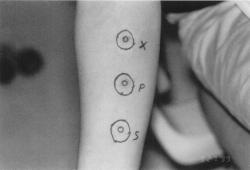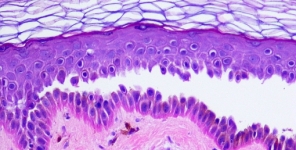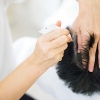Reazioni avverse e presunta allergia agli anestetici locali: analisi di 331 pazienti
 Lo scopo di questo studio è stato quello di determinare la prevalenza delle vere allergie agli anestetici locali (LA) nei pazienti con sospetta ipersensibilità e di descrivere le principali caratteristiche delle reazioni avverse ai farmaci (ADR) indotte dagli LA nella nostra popolazione. Abbiamo analizzato retrospettivamente le cartelle cliniche dei pazienti che si sono presentati al Dipartimento di Dermatovenereologia del Centro Ospedaliero Universitario di Rijeka, a Rijeka in Croazia, per l'indagine dell'ipersensibilità agli LA nel periodo compreso tra gennaio 2000 e dicembre 2012.
Lo scopo di questo studio è stato quello di determinare la prevalenza delle vere allergie agli anestetici locali (LA) nei pazienti con sospetta ipersensibilità e di descrivere le principali caratteristiche delle reazioni avverse ai farmaci (ADR) indotte dagli LA nella nostra popolazione. Abbiamo analizzato retrospettivamente le cartelle cliniche dei pazienti che si sono presentati al Dipartimento di Dermatovenereologia del Centro Ospedaliero Universitario di Rijeka, a Rijeka in Croazia, per l'indagine dell'ipersensibilità agli LA nel periodo compreso tra gennaio 2000 e dicembre 2012.
In totale, 331 pazienti sono stati sottoposti a test cutanei e, in caso di risultati negativi, anche ad un'esposizione sottocutanea agli LA. È stato eseguito il patch test per i pazienti in cui si sospettava una reazione ritardata. Complessivamente, i 331 pazienti hanno riportato 419 ADR indipendenti che si sono verificate durante 346 procedure. Nei casi più frequenti i pazienti anno avuto una sola ADR, ma 41 (12.4%) di loro hanno avuto due reazioni, 14 (4.2%) ne hanno avute tre, cinque (1.5%) ne hanno avute quattro e in un paziente (0.3%) sono state osservate anche cinque ADR agli LA.
La maggior parte delle reazioni si è verificata durante le procedure dentistiche quando vengono utilizzate più comunemente la lidocaina e l'articaina. Sono state riportate delle reazioni locali in 44 pazienti, mentre si sono presentati 490 sintomi generali durante 375 ADR indipendenti in 287 pazienti. In 89 pazienti (18.2%), i sintomi più comuni hanno interessato il sistema cardiovascolare. In tre pazienti (0.91%) è stata rilevata una reazione allergica; un paziente ha mostrato una reazione di ipersensibilità di tipo immediato alla bupivacaina e due pazienti hanno avuto una reazione di tipo ritardato alla lidocaina.
Pertanto, le reazioni avverse agli LA sono comuni e sono causate per lo più dalle loro proprietà farmacologiche, dalle combinazioni di farmaci o dalla loro origine psicogena: comunque, gli episodi allergici ad LA sono rari.
Storia della pubblicazione:
Titolo: Adverse reactions and alleged allergy to local anesthetics: Analysis of 331 patients
Rivista: The Journal of Dermatology. doi: 10.1111/1346-8138.12168
Autori: Tanja Batinac, Vlatka Sotošek Tokmadžić, Vesna Peharda, Ines Brajac
Affiliazioni:Department of Dermatovenereology, University Hospital Center Rijeka, Rijeka, Croatia Department of Anesthesiology, Reanimatology and Intensive Care, Faculty of Medicine, University of Rijeka, Rijeka, Croatia
Abstract:
The aim of this study was to determine the prevalence of true local anesthetic (LA) allergy among patients referred for suspected hypersensitivity and to describe the main characteristics of adverse drug reactions (ADR) induced by LA in our population. We retrospectively analyzed the medical files of patients referred to the Department of Dermatovenereology, University Hospital Center Rijeka, Rijeka, Croatia, for the investigation of LA hypersensitivity in the period between January 2000 and December 2012. A total of 331 patients underwent skin testing and, in cases of negative results, subcutaneous exposition to LA. In patients with suspected delayed reaction, patch test was performed. Altogether, 331 patients reported 419 independent ADR occurring during 346 procedures. Most commonly, patients reported having only one ADR, but 41 (12.4%) of them had two reactions, 14 (4.2%) had three, five (1.5%) had four and in one patient (0.3%) five ADR to LA were observed. The majority of reactions occurred during dental procedures when most commonly lidocaine and articaine were used. Local reactions were reported in 44 patients, whereas 490 general symptoms occurred during 375 independent ADR in 287 patients. The most common symptoms were cardiovascular system reactions in 89 patients (18.2%). Allergic reaction was detected in three patients (0.91%). One patient showed immediate-type reaction to bupivacaine and two patients had a delayed-type reaction to lidocaine. Adverse reactions to LA are common and are mostly due to their pharmacological properties and drug combinations or psychogenic origin. Allergic accidents to LA are rare.





